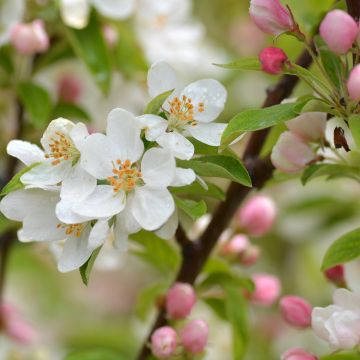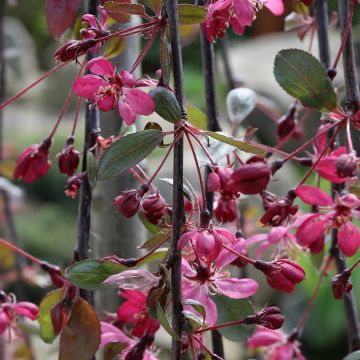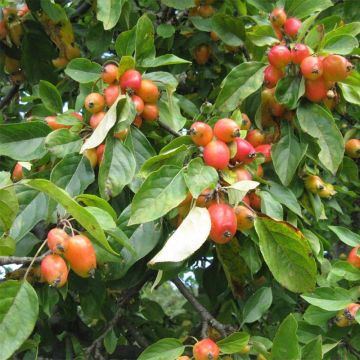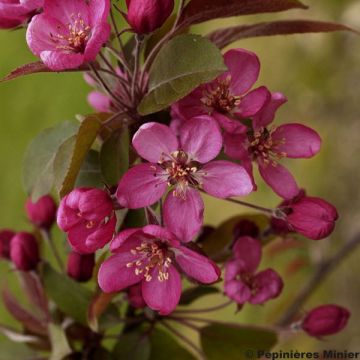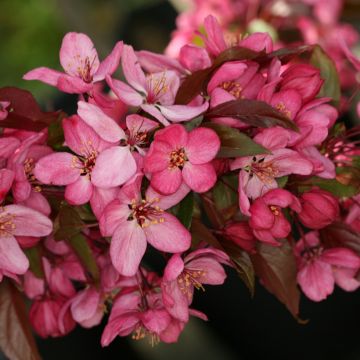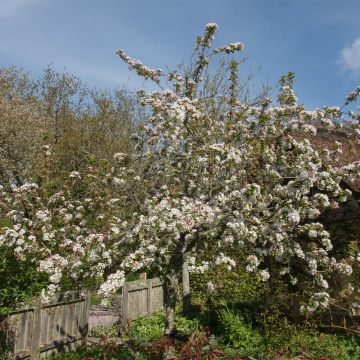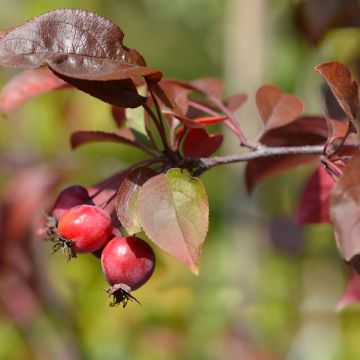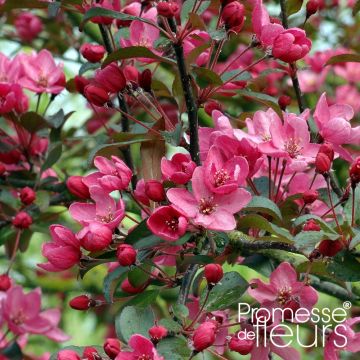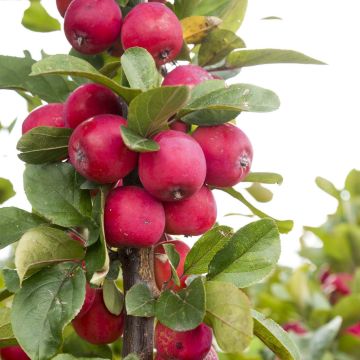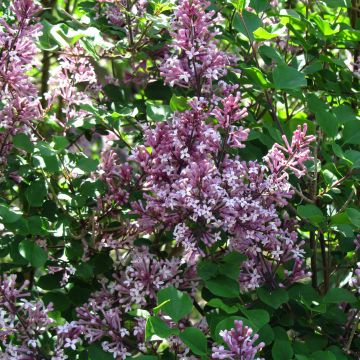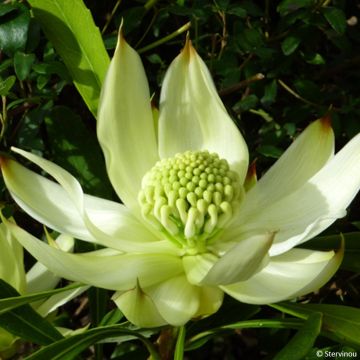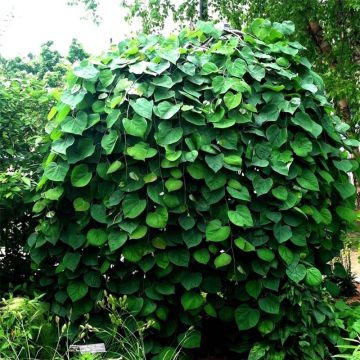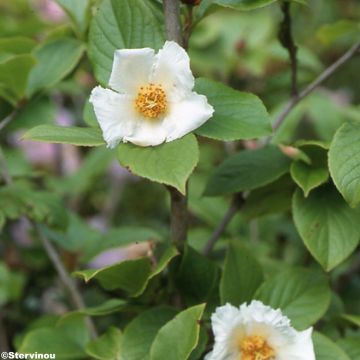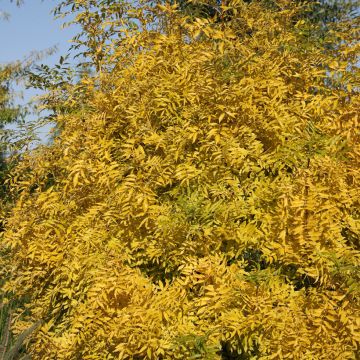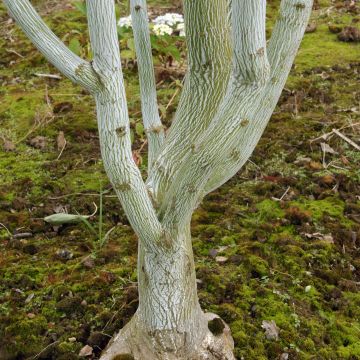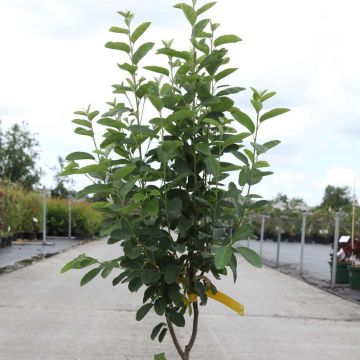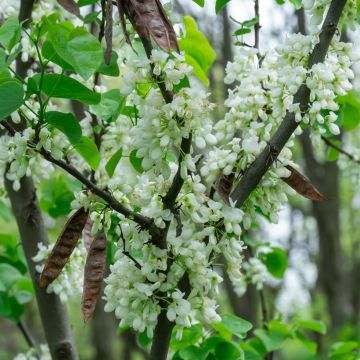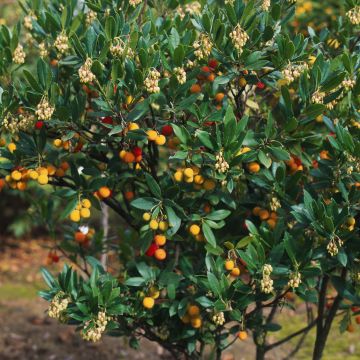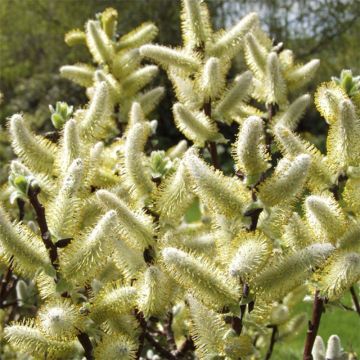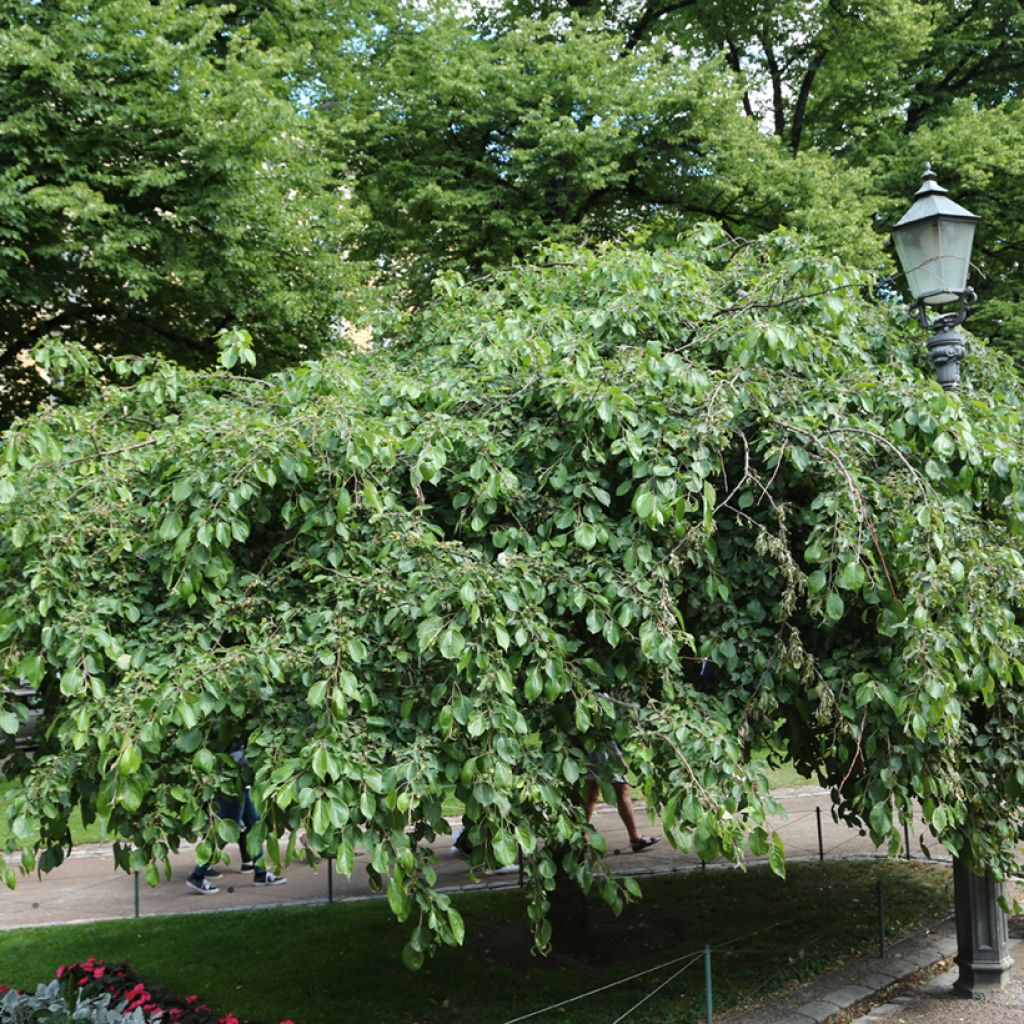

Malus Hyvingiensis - Crabapple
Malus Hyvingiensis - Crabapple
Malus domestica Hyvingiensis
Crabapple
This item cannot be shipped to the selected country
Delivery charge from €5.90
More information
Schedule delivery date,
and select date in basket
This plant carries a 24 months recovery warranty
More information
We guarantee the quality of our plants for a full growing cycle, and will replace at our expense any plant that fails to recover under normal climatic and planting conditions.
From €5.90 for pickup delivery and €6.90 for home delivery
Express home delivery from €8.90.
Does this plant fit my garden?
Set up your Plantfit profile →
Description
Malus 'Hyvingiensis' is an ornamental apple tree grafted on a stem with a magnificent weeping habit. It is a beautiful small tree in spring with its white flowers, pleasant in summer with the large fountain of greenery it forms, and interesting in early autumn with its pretty bicoloured, edible apples. Its moderate growth is suitable for gardens of all sizes. A hardy and useful small tree!
The ornamental apple trees or crabapples come from various botanical species of the genus Malus belonging to the Rosaceae family. Hardy, accommodating, and easy to grow, flowering apple trees can thrive in ordinary soil but prefer deep, loose, and fresh loamy soil and sunny exposures. Once established, they look after themselves while maintaining their generous character. Numerous cultivars have been developed in Europe and the United States, becoming increasingly attractive and disease-resistant.
The 'Hyvingiensis' ornamental apple tree has a trunk height of 1.50m to 2m topped with a wide and slightly trailing crown. Its final dimensions vary depending on the height of the rootstock. Overall, its crown measures 1.50 m in height and 3m in width. It maintains its magnificent habit without the need for pruning and develops fine wood. Flowering occurs in May-June depending on the climate, on branches with young leaves. Many pink buds grouped in small clusters open into large, white, single flowers, measuring 3.5 to 4cm in diameter. The leaves fully unfold towards the end of flowering. After pollination by bees, a multitude of small apples measuring 4 to 5cm in diameter form. When ripe, they turn yellow and red on the sun-exposed side. These fruits are loved by birds and can also be used to make juice or compote. The deciduous foliage is composed of ovate, alternate, and toothed leaves. It turns yellow before falling in autumn.
Malus 'Hyvingiensis', like most flowering apple trees, is a good pollinator for fruit-bearing apple trees. Its generous flowering is followed by the beauty of the fruits in late summer. Its magnificent weeping habit, as well as its high cold resistance, are major assets. Its crown attracts bees, many birds, and all the garden's wildlife. It can be planted as a specimen tree, prominently displayed on a lawn or in the centre of a bed. To accompany it in the garden, Brunneras (Siberian bugloss), Lily of the Valley, or a carpet of variegated Greater Periwinkle can be planted at its base.
Report an error about the product description
Plant habit
Flowering
Foliage
Botanical data
Malus
domestica
Hyvingiensis
Rosaceae
Crabapple
Cultivar or hybrid
Other Malus - Crabapple
Planting and care
Easy to grow in ordinary, but deep soil, Malus 'Hyvingiensis' requires a bright exposure and space to express its beautiful habit. Ornamental Malus trees are generally very accommodating, but they like fertile, moist, and deep soil. After careful planting and regular watering during the first two years, they manage on their own. Plant it in the sun. Dig a large planting hole. If the soil is poor, add compost to the planting soil and apply fertiliser or compost at its base every spring.
Planting period
Intended location
Care
This item has not been reviewed yet - be the first to leave a review about it.
Trees for small gardens
Haven't found what you were looking for?
Hardiness is the lowest winter temperature a plant can endure without suffering serious damage or even dying. However, hardiness is affected by location (a sheltered area, such as a patio), protection (winter cover) and soil type (hardiness is improved by well-drained soil).

Photo Sharing Terms & Conditions
In order to encourage gardeners to interact and share their experiences, Promesse de fleurs offers various media enabling content to be uploaded onto its Site - in particular via the ‘Photo sharing’ module.
The User agrees to refrain from:
- Posting any content that is illegal, prejudicial, insulting, racist, inciteful to hatred, revisionist, contrary to public decency, that infringes on privacy or on the privacy rights of third parties, in particular the publicity rights of persons and goods, intellectual property rights, or the right to privacy.
- Submitting content on behalf of a third party;
- Impersonate the identity of a third party and/or publish any personal information about a third party;
In general, the User undertakes to refrain from any unethical behaviour.
All Content (in particular text, comments, files, images, photos, videos, creative works, etc.), which may be subject to property or intellectual property rights, image or other private rights, shall remain the property of the User, subject to the limited rights granted by the terms of the licence granted by Promesse de fleurs as stated below. Users are at liberty to publish or not to publish such Content on the Site, notably via the ‘Photo Sharing’ facility, and accept that this Content shall be made public and freely accessible, notably on the Internet.
Users further acknowledge, undertake to have ,and guarantee that they hold all necessary rights and permissions to publish such material on the Site, in particular with regard to the legislation in force pertaining to any privacy, property, intellectual property, image, or contractual rights, or rights of any other nature. By publishing such Content on the Site, Users acknowledge accepting full liability as publishers of the Content within the meaning of the law, and grant Promesse de fleurs, free of charge, an inclusive, worldwide licence for the said Content for the entire duration of its publication, including all reproduction, representation, up/downloading, displaying, performing, transmission, and storage rights.
Users also grant permission for their name to be linked to the Content and accept that this link may not always be made available.
By engaging in posting material, Users consent to their Content becoming automatically accessible on the Internet, in particular on other sites and/or blogs and/or web pages of the Promesse de fleurs site, including in particular social pages and the Promesse de fleurs catalogue.
Users may secure the removal of entrusted content free of charge by issuing a simple request via our contact form.
The flowering period indicated on our website applies to countries and regions located in USDA zone 8 (France, the United Kingdom, Ireland, the Netherlands, etc.)
It will vary according to where you live:
- In zones 9 to 10 (Italy, Spain, Greece, etc.), flowering will occur about 2 to 4 weeks earlier.
- In zones 6 to 7 (Germany, Poland, Slovenia, and lower mountainous regions), flowering will be delayed by 2 to 3 weeks.
- In zone 5 (Central Europe, Scandinavia), blooming will be delayed by 3 to 5 weeks.
In temperate climates, pruning of spring-flowering shrubs (forsythia, spireas, etc.) should be done just after flowering.
Pruning of summer-flowering shrubs (Indian Lilac, Perovskia, etc.) can be done in winter or spring.
In cold regions as well as with frost-sensitive plants, avoid pruning too early when severe frosts may still occur.
The planting period indicated on our website applies to countries and regions located in USDA zone 8 (France, United Kingdom, Ireland, Netherlands).
It will vary according to where you live:
- In Mediterranean zones (Marseille, Madrid, Milan, etc.), autumn and winter are the best planting periods.
- In continental zones (Strasbourg, Munich, Vienna, etc.), delay planting by 2 to 3 weeks in spring and bring it forward by 2 to 4 weeks in autumn.
- In mountainous regions (the Alps, Pyrenees, Carpathians, etc.), it is best to plant in late spring (May-June) or late summer (August-September).
The harvesting period indicated on our website applies to countries and regions in USDA zone 8 (France, England, Ireland, the Netherlands).
In colder areas (Scandinavia, Poland, Austria...) fruit and vegetable harvests are likely to be delayed by 3-4 weeks.
In warmer areas (Italy, Spain, Greece, etc.), harvesting will probably take place earlier, depending on weather conditions.
The sowing periods indicated on our website apply to countries and regions within USDA Zone 8 (France, UK, Ireland, Netherlands).
In colder areas (Scandinavia, Poland, Austria...), delay any outdoor sowing by 3-4 weeks, or sow under glass.
In warmer climes (Italy, Spain, Greece, etc.), bring outdoor sowing forward by a few weeks.

































